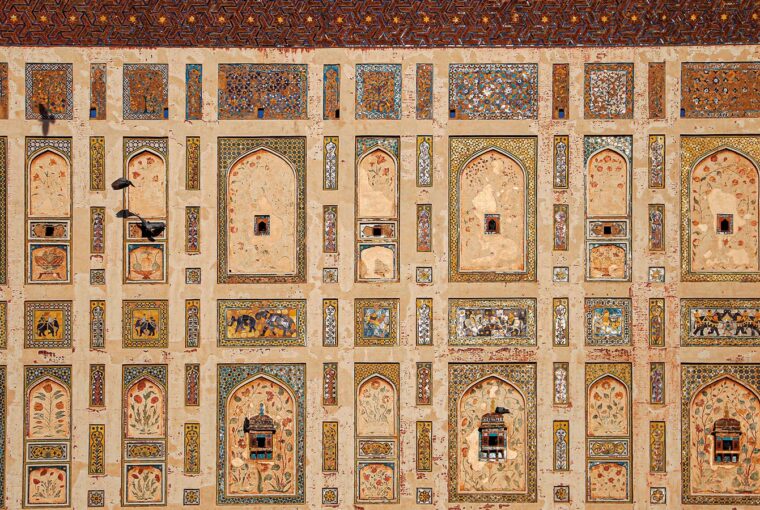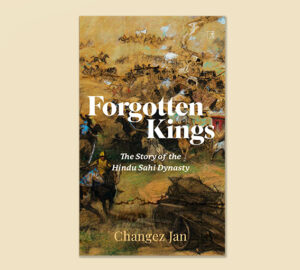Styling: N-Gents
Special Thanks to Aisha Khan, Deputy Director, Culture at WCLA


Shoes: Hush Puppies x Muneeb Nawaz
Photo: Aisha Khan @WCLA

Shoes: Hush Puppies x Munib Nawaz
KAMRAN LASHARI DIRECTOR GENERAL, WALLED CITY OF LAHORE AUTHORITY (WCLA)

Shoes: Hush Puppies x Munib Nawaz
Undisputedly one of Pakistan’s top bureaucrats, Kamran Lashari is also amongst its most widely known and recognized faces. Best described as a visionary, a dynamic force, and a man of action, he is an exceptional chief, where contrary to previous precedents, his portfolio does not define him; in fact, he defines them!
Having joined Civil Services in 1979, he has served at various postings in Sindh, Islamabad and Lahore. His groundbreaking initiatives at the different departments he has served have led to his wide scale popularity and added to the legend of his personal identity.
From being the pioneer of the Parks and Horticulture Authority where he was responsible for conceptualising, designing and to much critical acclaim, the beautification of Lahore through various projects like flower festivals along popular city stretches, the Canal mela, the iconic Gowalmandi Food Street Project to later serving as CDA Chairman where he infused new life into the federal capital, his roaring success reflected via the Rawal Lake project, the development and redesigning of Daman e Koh, the famous hilltop Monal restaurant and the designing of the Saidpur Village.
Certainly, his prowess as an articulate storyteller is no less. Currently as the Director General of the Walled City of Lahore Authority, he has commandeered multiple conservation, management and exploration projects at the historic Lahore Fort – most recent and notable of which are the restoration and rehabilitation of the Mughal Royal Kitchens, the Arms and Ammunition Depot (Barood Khana) built by the British in 1853 and the conservation of the 17th century Mughal era Picture Wall – an imposing mosaic that stands tall in majestic glory as one enters the Fort by the Shah Burj Gate.
“I joined the Walled City of Lahore Authority on Dec 22, 2012 and it gives me a sense of joy to see all the work we have managed to accomplish at the Lahore Fort in these last seven years which spans over various disciplines such as conservation, restoration, rehabilitation and exploration.”
“The conservation and management of the 17th century Picture Wall, the restoration and rehabilitation of the Barood Khana dating back to the British Raj and the Mughal era Royal Kitchens, the archaeological excavation and conservation of Musaman Gate are all projects that reflect my belief in tangible results.”
“I believe sound partnerships are the key to success and here I would name the Aga Khan Trust for Culture with whom I, as WCLA, was able to reinstate a working relationship. Over the years, their work coupled with the international expertise they bring to the table has really helped us in the capacity building of our own teams.”
“We have recently made some new discoveries at the Lahore Fort, where some new elements have come to light. Mounds of rubble have been removed to resurface Akbar’s Shahi Hammam. Under Emperor Jahangir’s quadrangle, some chambers have been unearthed. As the teams continue their work on exposing these for the first time in centuries, we will soon be able to share it with the world at large.”
“It is a matter of great pride for me to be helming the preservation of our rich cultural and historical past to inform our present, but what serves as a greater impetus is the thought that this is a legacy we will be leaving to our future generations. For me, it is Sadqa-e-Jaria.”
NAJAM US SAQIB DIRECTOR, CONSERVATION AND PLANNING, WALLED CITY LAHORE AUTHORITY (WCLA)

With a Bachelors degree in Architecture and a Masters in Ecological Planning combined with a certification in Historic Preservation from University of Pennsylvania, Najam us Saqib joined the Walled City of Lahore Authority in 2015. Since then he has been leading groundbreaking conservation and restoration projects at the Lahore Fort.
Some of the projects that have been completed so far include the imperial Royal Kitchens and Mussaman Gate dating back to the 17th century Mughal era, and the arresting Barood Khana (arms and ammunition depot) built circa 1853 during the British Raj.
Saqib is extensively involved in the conservation and restoration of multiple projects and sites within the Walled City of Lahore as well as other ongoing projects at the Lahore Fort which include the discovery, excavation and rehabilitation of these marked structures. Armed with details and lesser known facts of our regal past, Saqib always has a story or two to tell.
“We started work on the Barood Khana in the first quarter of 2018 and with consistent hard work and dedication, were able to complete it in almost record time – thirteen months! The reason for this was partly the fact that the building was structurally stable when we started work on it. However, we had to remove 1,50,000 cubic feet of debris along with bricks, concrete and other stones from the site via chutes to expose the structure.”
“After 3D scanning and complete documentation of the Barood Khana which was built during the British Raj around 1853, we prepared conservation proposals and set to work. There were minimum interventions on the structure, mostly lime patchwork, some lime plaster and adhesives for proofing. By sticking to conservation ethics, with the evidence in hand, we reconstructed two doors and the ventilators, while restoring other wooden structures.”
“We have also worked on the restoration and rehabilitation of the Mussaman Gate which was built circa 1632 by Mughal Emperor Shah Jahan for entrance to the Lahore Fort. The total time spent on this project was only ten months. According to old maps and references, the royals would enter through this gate and crossing the garden they were able to reach Deewan e Aam, Jahangir’s Quadrangle, Shah Jahan’s bed chambers and the Sheesh Mahal.”
“The conservation and rehabilitation of The Royal Kitchens commenced in mid 2017, in collaboration with the Aga Khan Trust for Culture, and was completed by February 2019. The structure was covered in wild vegetation and filled with debris as most of it suffered collapse post 1970. Our first task was to expose the structure and reconstruct the domes and columns in need of repair in attendance with conservation guidelines using UNESCO approved construction material. Now after project completion, seeing the scale and scope of its grandeur, we have proposed to put the site to adaptive reuse and treat it as a museum space. This is also the reason we have retained some of the ruinous part in its half collapsed form.”
“Our ongoing projects will bring to light areas of the Fort that need uplifts and restoration or have been fading in obscurity since centuries. These include conservation of the Alamgiri Gate and Loh Temple, conservation of Moti Masjid and Makatib Khana, conservation and rehabilitation of the Akbari Hammam, conservation of Deewane Aam and Kharak Singh Haveli, conservation of Lal Burj, Kala Burj and the Shahjahani Khwabgah (bed chambers).”
Special Thanks: Azeem Dad Khan, Senior Architect, Conservation and Planning, WCLA.


WAJAHAT ALI ARCHITECT/MANAGER CONVERSATION AND DESIGN, AGA KHAN TRUST FOR CULTURE
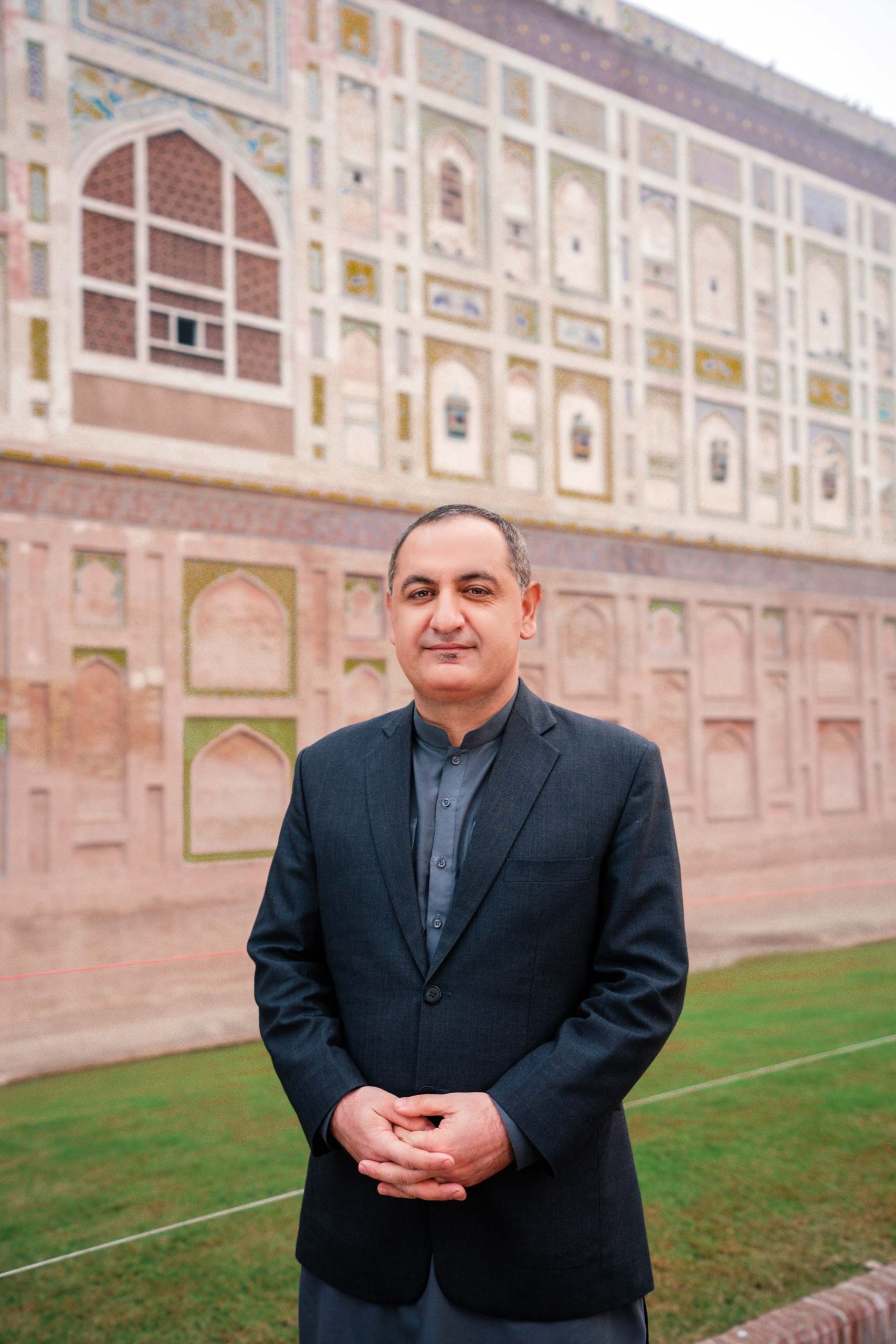
Wajahat Ali is from Hunza. Having completed his Bachelors in Architecture from National College of Arts in 2001, he went to receive a Masters in Architecture from the University of Nottingham, UK in 2006 and a Masters in Cultural Economics from University of Turin, Italy (2007).
During his 18 year old association with the Aga Khan Cultural Service Pakistan (the working arm of the Aga Khan Trust for Culture), he has worked on conservation projects at the 400 year old Shigar Fort, Khaplu Palace, 900 years old Altit Fort, the 400 years old Shahi Hammam and Wazir Khan Mosque. All the projects he has worked on so far have won UNESCO Heritage Awards for best heritage conservation category.
Currently leading the team carrying out conservation work at the World Heritage Site of Lahore Fort, the restoration of the magnificent Picture Wall is their main project. This wall which is also known to be the world’s largest picture wall, was commissioned by Mughal Emperor Jahangir in 1624 A.D. and according to historical estimates took almost 8 years in the making and was completed around 1632 A.D. under the reign of Emperor Shah Jahan.
Besides restoring some of the prime monuments within the Lahore Fort – such as the Royal Kitchens, the primary focus for Ali and his team is the development of a master plan for the holistic conservation and management of the site as well as its buffer zone.
We initiated our work at the UNESCO World Heritage Site, Lahore Fort in late 2015 by carrying out intensive documentation for two whole years – 2016 and 2017, which helped us identify a few unique projects for restoration – and one of the findings was the conservation of the Picture Wall.”
“Picture Wall is almost half a kilometer long wall. 416 meters to be exact. 1500 feet long with an average height of 15 to 16 meters which is equivalent to 60 feet. The total surface area of the Picture Wall is almost 208,000 square feet. That is equal to 20 kanals of surface area. Every square millimeter or every square inch is being treated and it is time consuming.”
“We kicked off the project by developing a small prototype, followed by a peer review, seeking the opinion of both local and international industry experts to come and critique on the output of the prototype. The feedback we got from various stakeholders was compiled and consulted before we began actual work on the wall in 2018.”
“Mughals used water as the main architectural design or leisure element but rerouting done during the colonial era, as well as other interventions in the last 100 years has caused major damage. So most of our efforts were directed at rerouting this water from the top as well as exposing the original Mughal floor level which is 5 to 6 feet below the current ground level which we have by draining it of excess water.”
“The roof was also suffering unseen damage. From the onset, you see a properly stable wooden beam which takes the load but when you dig further and see things in detail, all the wood is rotten. So we have to replace it, and these are the things which are essential for survival of these historical monuments.”
“This project has some pioneering conservation efforts which were carried out in situ , such as enhancing the water repellent character of tiles, which is not visible to an untrained eye. It is done inside the wood but it is an essential practice that had to be carried out.”
“Whatever you see is hardly 5 to 10% of the actual work. What is visible is the colors, enhanced fresco panels, tile work and the visibility of these architectural or decorative motifs, but the bulk of the effort has gone into structural strengthening and re-routing the water from the top and addressing the water issue at the base.”
“We plan to complete the conservation of the total scope by 2021. In the next 3 months, we will be completing 40% of the total volume and the remaining 60% will take another 2 years. This is the plan for now, unless we encounter any unforeseen situation.”

Shoes: Hush Puppies x Munib Nawaz
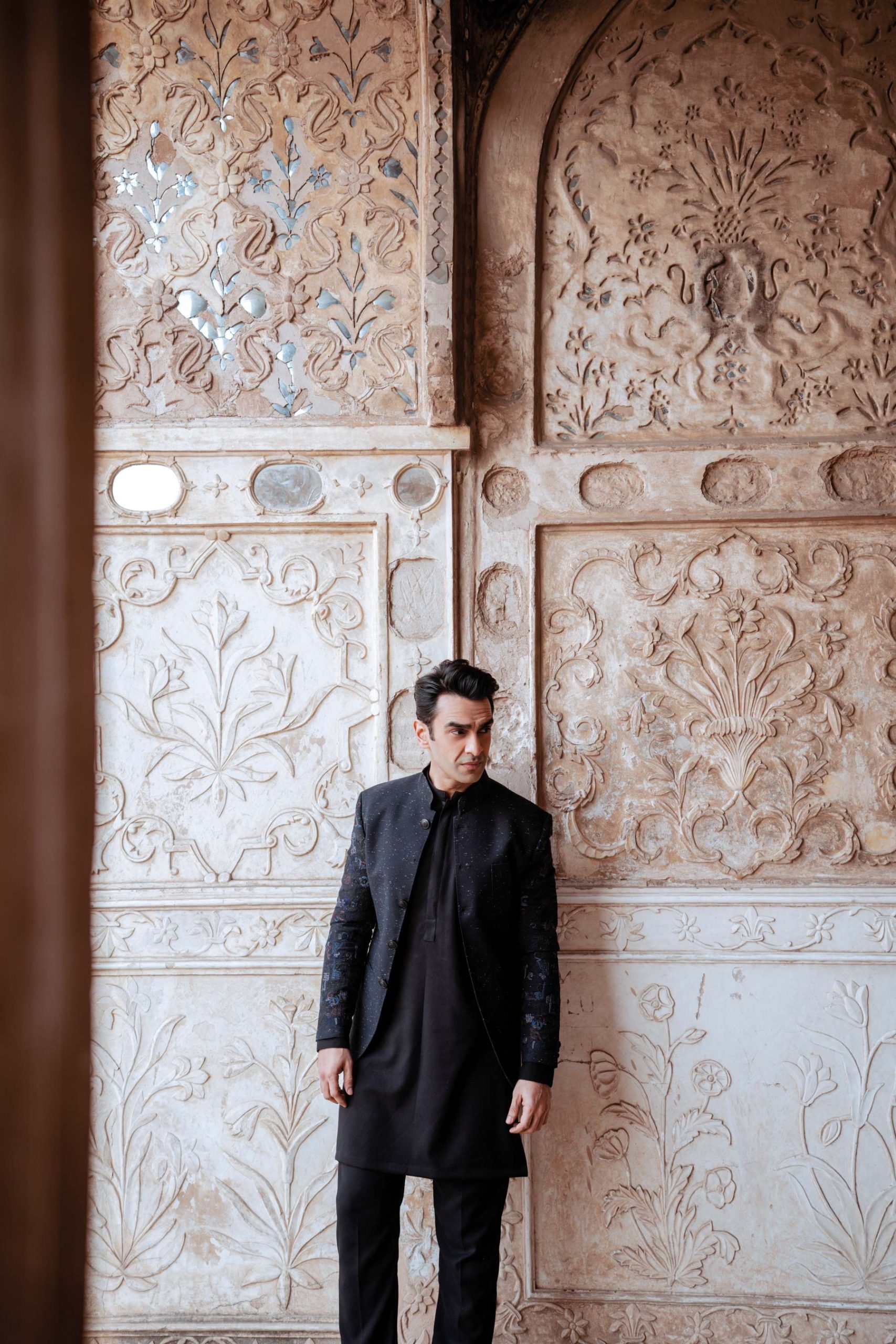
MUNIB NAWAZ FASHION DESIGNER/ENTERPRENEUR, MUNIB NAWAZ
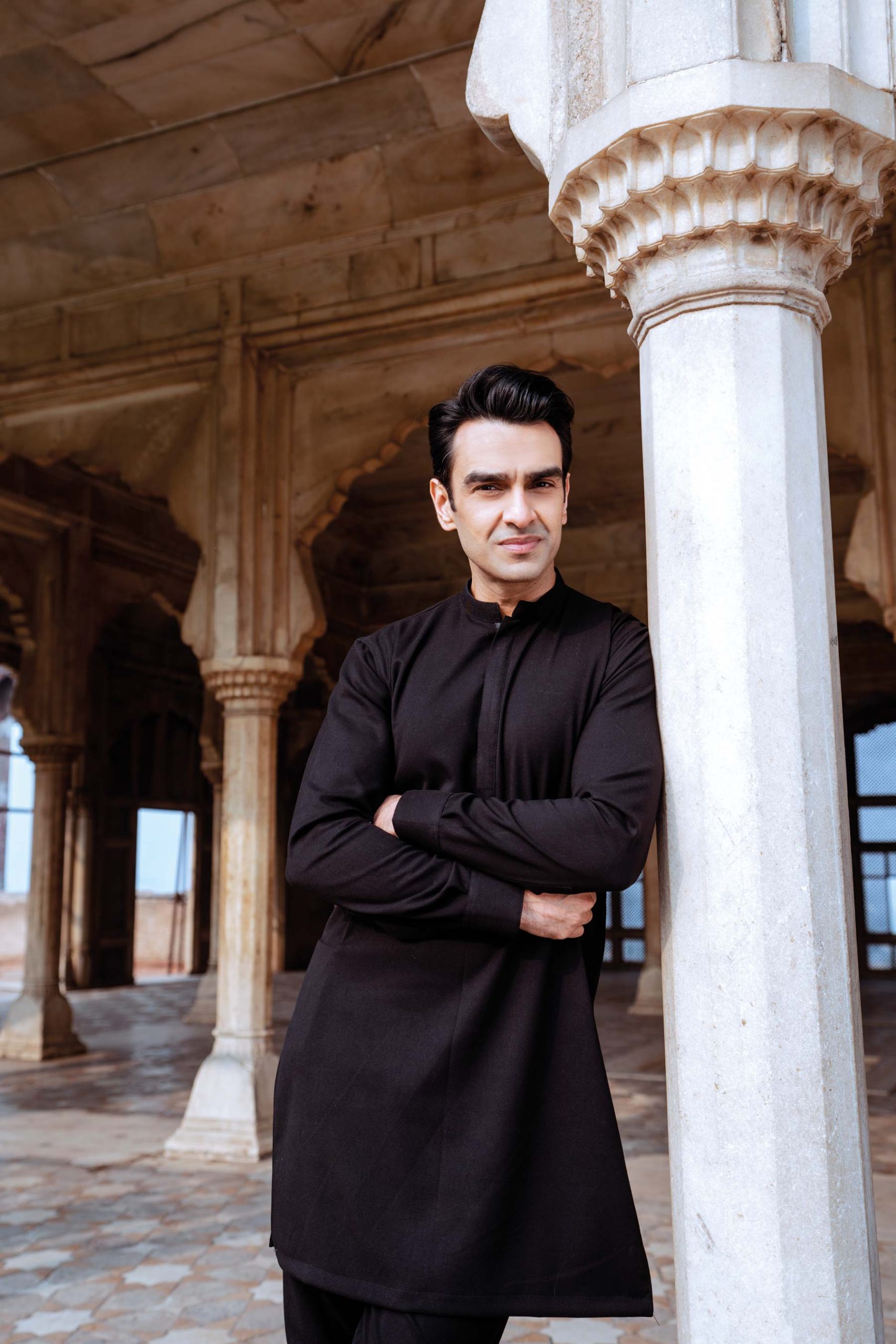
He is not just one of the most popular menswear fashion designers in Pakistan, the man behind the eponymous label Munib Nawaz has also garnered much critical acclaim for his skill and talent by winning the Best International Men’s Wear Designer category in the Miami Fashion Week 2009 in addition to many other prestigious awards for his work.
However, Nawaz sees himself as more than a fashion designer. In his own words, he describes himself as a “happy human being who has come to terms with being a whole self instead of just being highlighted for my career.” One website aptly lists him as “a progressive idealiser, an entrepreneur, a fashion designer and above all a believer in humanity!”
With retail outlets and production houses in 3 major cities of Pakistan and 16 years into the business, Munib Nawaz is one of the leading luxury men’s wear labels. Nawaz finds himself inspired by music, art, culture and design.
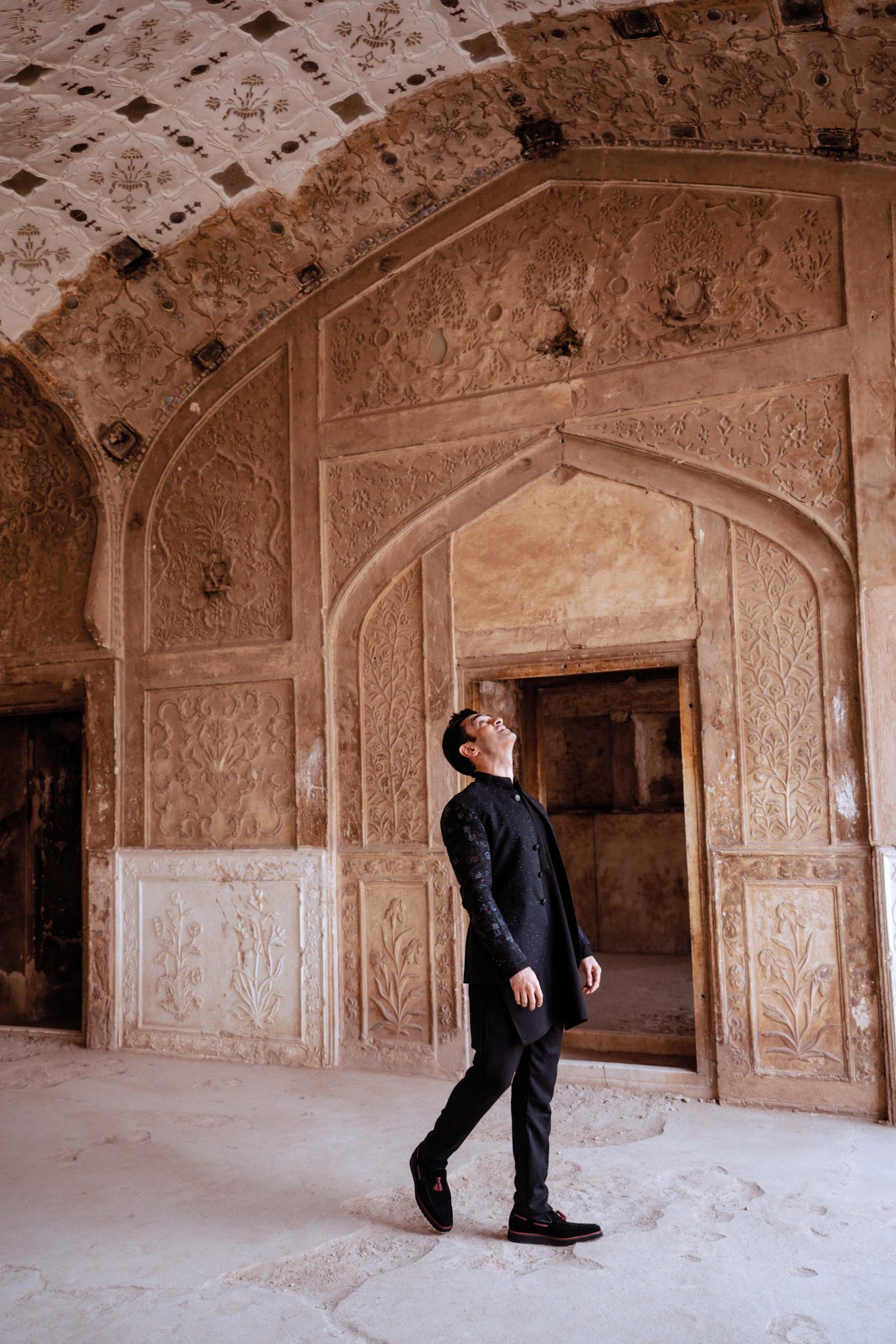
“I always try to look inwards to our culture for inspirational stories so that I can visit them, make them relatable to contemporary times and show them to the new generation. For me that’s how a conversation starts about a certain subject especially the past.”
“For me as design person, I would love to know more about the ideology that has gone behind the grandeur, the magnitude and the sheer brilliance of the structure and also the team that must have worked together to create such a legendary artifact. I’d love to learn about the architect, see the original drawings, maybe go in the philosophy of why certain spaces decorated differently, beyond their functionalities.”
“It’s the responsibility of the older generation to ensure that traditions are transmitted to the next generation in a way that the younger lot can associate with and appreciate the past. This teaching has to be done on an emotional curve so that they can also feel proud of being linked to such a culturally vibrant heritage.”
“I feel we need to start building on the empire of our past to build our empire of the future. If we don’t celebrate our legacy, we won’t be creating future legends.”


